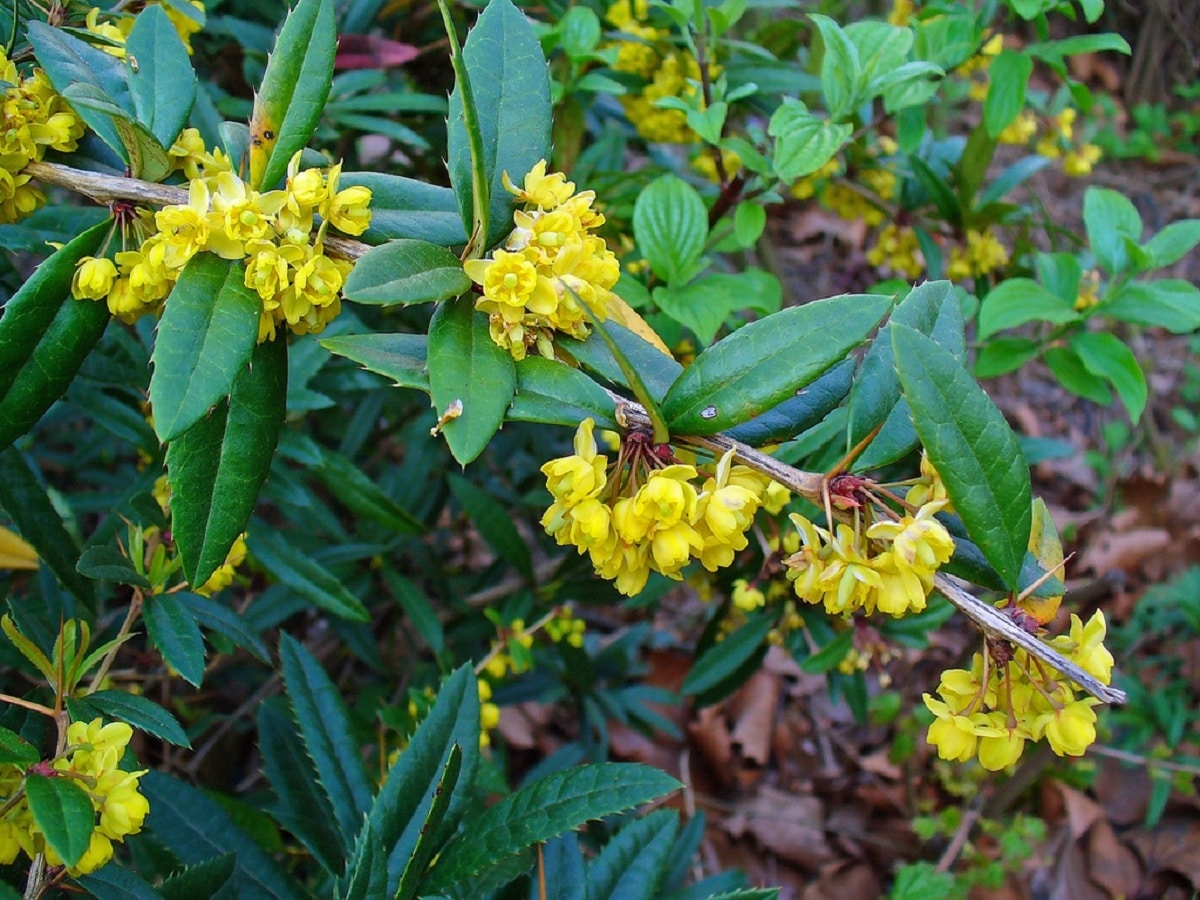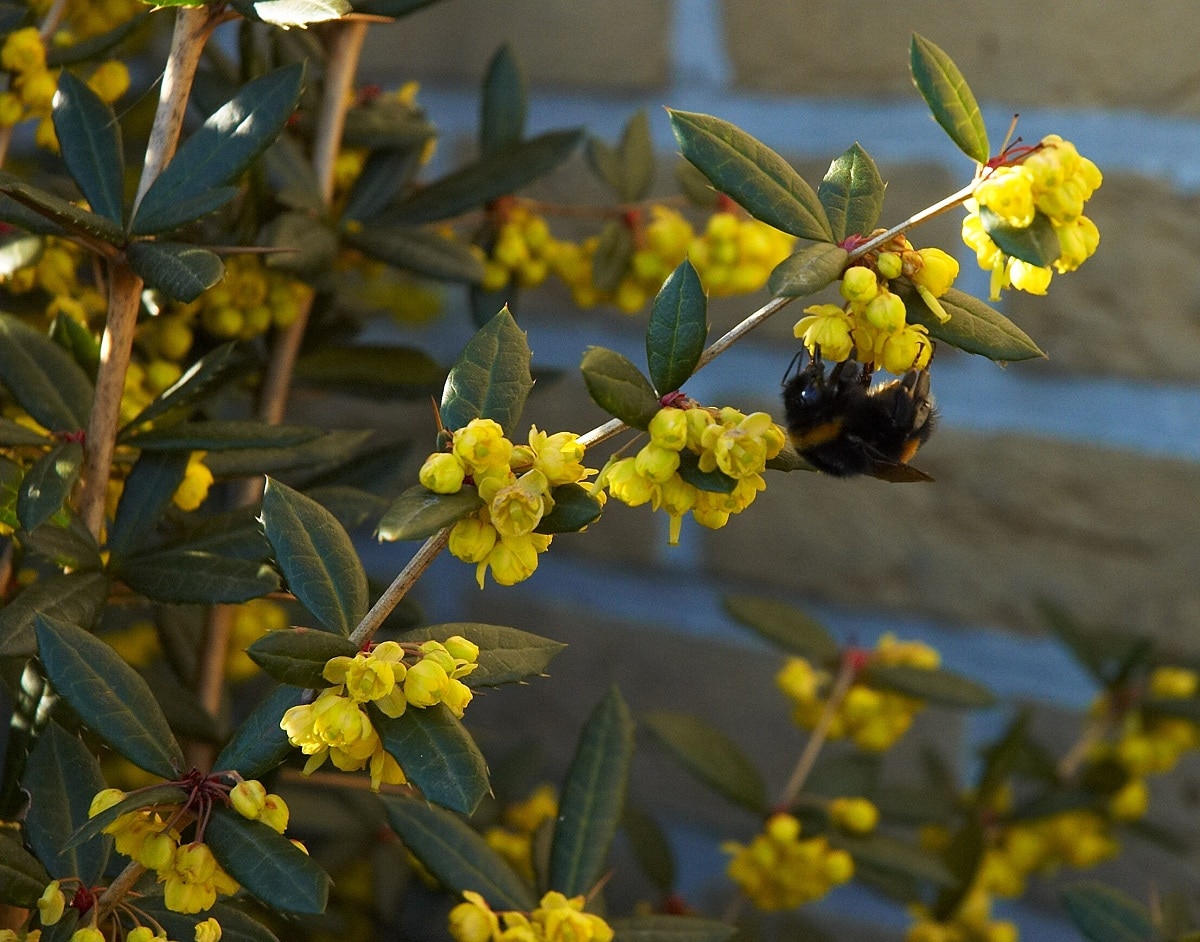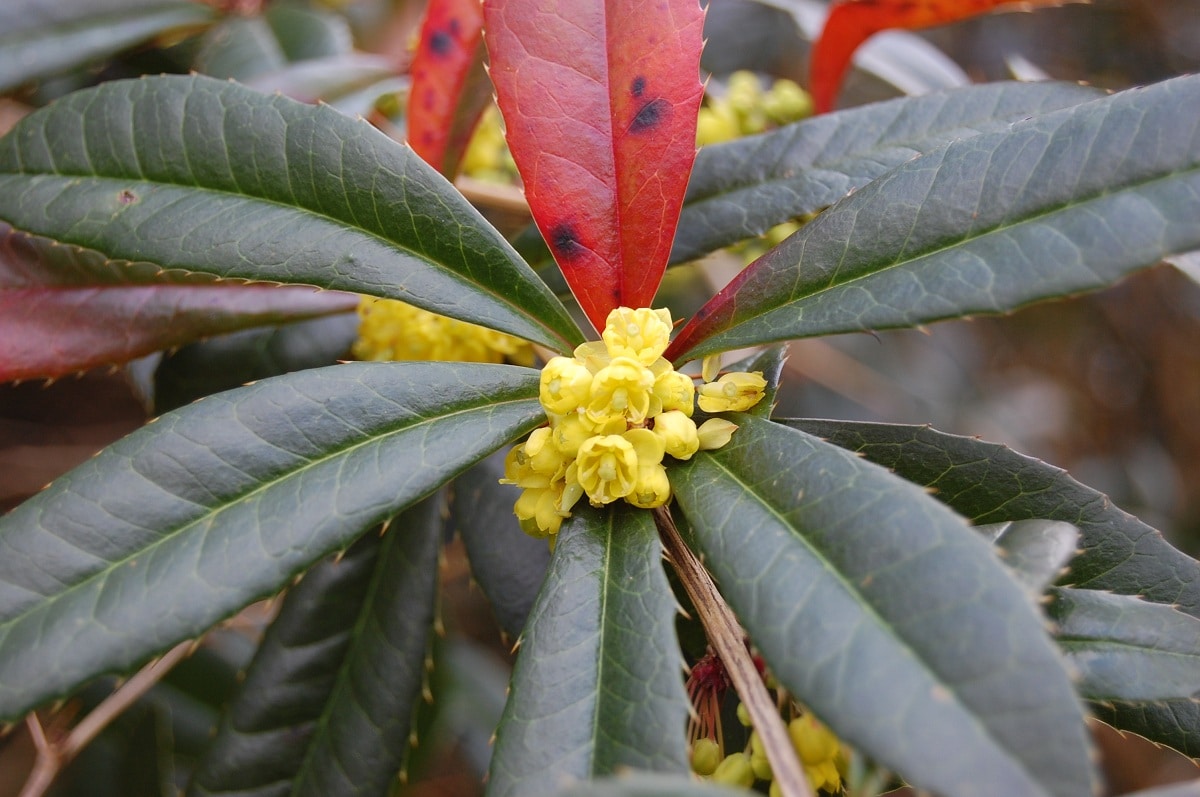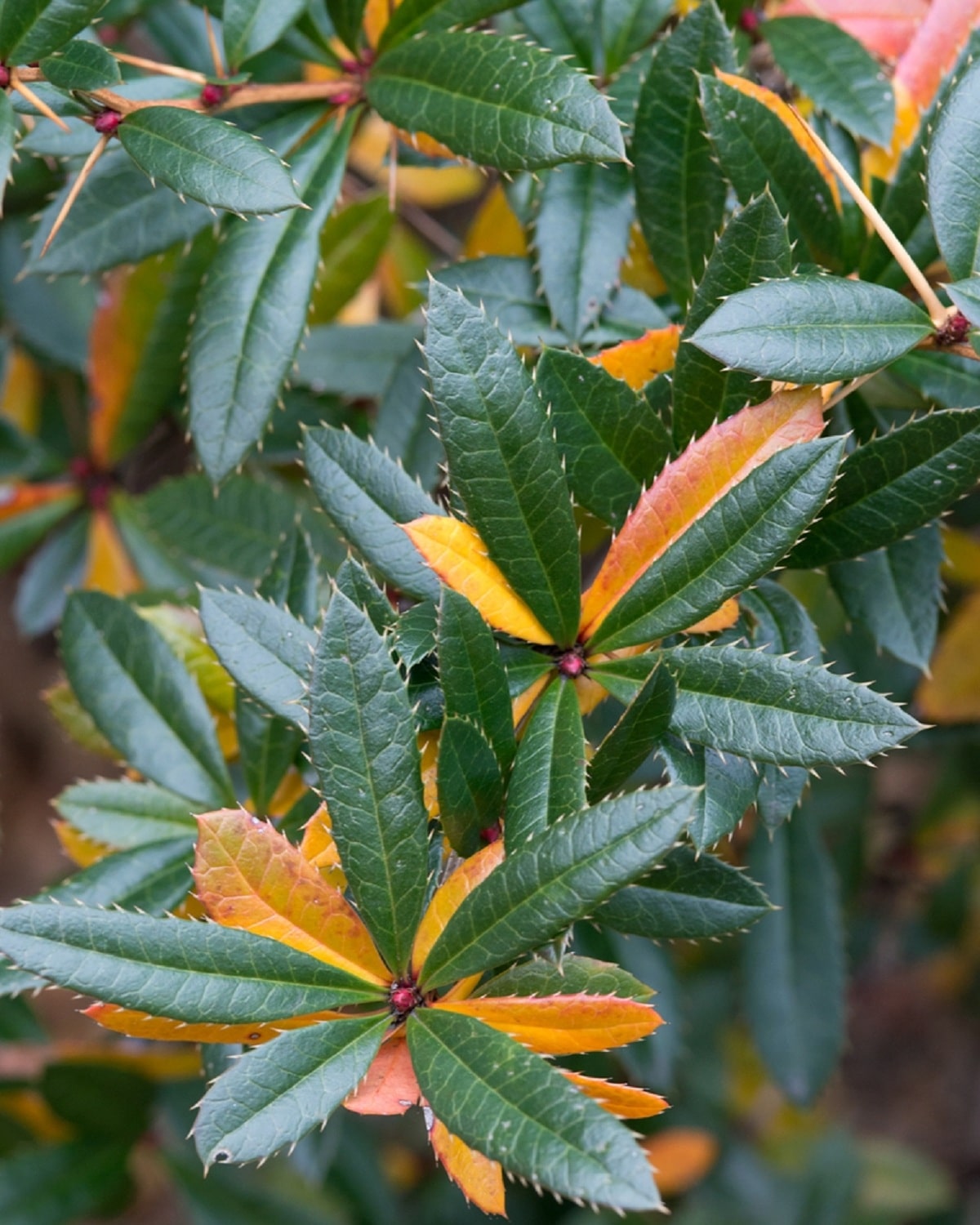
Today we are going to talk about a type of shrub plant whose foliage is quite attractive and can serve as an ornamental plant in gardens and parks. It's about the Berberis julianae. It belongs to the Berberidaceae family and to the genus Berberis. This genus is composed of both evergreen and deciduous and thorny shrubs. Most of these plants are native to Eastern Europe and Asia. They are usually cultivated for the attractive color of the foliage and the decorative value of the fruits and flowers.
In this article we are going to tell you all the characteristics, care and requirements of the Berberis julianae.
Key features

We are talking about a type of perennial shrub, although it belongs to a family that may have deciduous and semi-evergreen. It is mainly grown thanks to the decorative effect of the fruits and flowers, which generally have a yellow color and a rounded or cup shape. The advantage of growing the Berberis julianae in front of other bushes is that they are totally resistant to cold. This is essential in order to withstand different types of adverse conditions that can occur during winter in many places.
Other plants can be damaged by the cold of winter nights and can lead to problems in care and maintenance. However, to resist the cold well enough we should not worry about winter frosts. All parts of this plant can cause mild stomach upset if ingested. Therefore, we must be careful with the little ones and pets so that they do not eat part of this plant. It is not a serious stomach problem, but it is better to avoid any mishap.
All the bushes of the genus Berberis have thorns and are very easy to grow. This plant belongs to the group of angiosperms, which means that it has plants with flowers and fruits with seeds. As we have mentioned before, it is a species native to the area of Eastern Europe and Asia. However, thanks to its resistance to cold, it has been able to spread to many more areas of the world. Since it has great ornamental value, its popularity has spread over time. The ease of its cultivation makes the most inexperienced in the world of gardening venture to cultivate it in their gardens and urban parks.
Description of the Berberis julianae

This bush has a size between 2-3 meters in height, if it reaches its maximum growth. This maximum development occurs in ideal conditions during its growth. Despite its height, it has a fairly compact development. Its leaves are evergreen and have a dark green color and badges. The intense red autumnal color that some of them have makes it quite attractive to look at. The good thing about this variety of intense colors is that it can go very well with many plants and flowers that have intense but varied colors.
Normally this plant is used as a background plant to give something more robust and color signal. Flowering takes place in spring and early summer and has a yellow color. Nevertheless, it is not something of ornamental value. They are small flowers and do not usually combine well as the leaves do. As for the fruits, they are dark blue berries and grow during the fall. They are not edible fruits since they can give some mild stomach problems. As we have mentioned before, they do not have a poison that is aggressive, but it can cause some digestive disorders such as nausea and vomiting.
Care and requirements of the Berberis julianae

We are now going to describe the main care it needs and the requirements so that it can grow in good conditions. The first thing to do is talk about the sun exposure and its location. It is a plant that, although it tolerates low temperatures very well, needs full sun exposure. Can tolerate semi shade, but in this position you will not be able to get a deep red color during the fall. In order for the leaves to acquire this color, they must be exposed to sunlight as much as possible.
As for the climate, it is very resistant to almost all weather conditions. We can find the Berberis julianae survive very well cold and temperate climates. It is suitable for sowing in areas that have a snowy winter. You will not have a problem growing. It tolerates rustic soils since it does not have great demands. We just have to avoid very heavy soils.
It can be used well to make containers, beds and borders. The main ornamental value of this plant is the foliage. The plant remains for a long time and despite having arched thorns, it is a useful shrub to have a defensive fence. Pruning must be done after flowering and only the damaged or unwanted branches have to be removed.
Plagues and diseases
This plant can be attacked by ants and the powdery mildew. It is quite sensitive to these pests and diseases. Powdery mildew is a fungal disease. Its main sign is the appearance of a layer of mealy or cottony appearance and a white or grayish color, formed by the mycelium and conidia, which are the organs of asexual reproduction. In a strong attack the leaves turn yellow and later dry out.
Its appearance is due to a combination of factors, among which the weather and the environment intervene, and in the case of crops, the fertilizer also influences: fertilizers excessively loaded with nitrogen, low light conditions, excess humidity. Genetic poverty is also a cause to consider.
The most eventual thing that can suffer Berberis julianae It is the attack of the mealybugs and the whitefly. As for propagation, it can be easily propagated by seeds in late winter or early spring. If we are going to sow it by grafting, we must wait for the end of winter or the beginning of spring. Although there are many people who sow it through the cutting.
I hope that with this information you can learn more about the Berberis julianae and their characteristics.